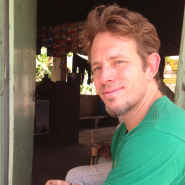Social networks, property rights, and public services in the slums of Patna and Jaipur
Despite their rapid growth, knowledge about slums – processes of settlement; trajectories over time; social, political and economic dynamics – remains rudimentary. Planners in India distinguish between declared and undeclared (or notified, recognised, and unrecognised) slums, but events have overtaken these gross distinctions, resulting in the emergence of five and perhaps six distinct types of slums. How slum settlements differ at a point of time is poorly understood. How their trajectories vary over time is almost completely unknown. Gaps in knowledge result in growing urban decay, segmented housing markets, proliferating squalor, corruption and wasteful expenditure, and rising inequalities in service provision.
Associated with these concerns, this project has three objectives: First, to refine and extend a satellite-image-based methodology for identifying, mapping, categorising and tracking slum settlements through time and in real time. Second, to understand if and how individual slum settlements upgrade over time, acquiring property rights and access to public goods. Third, to examine how different factors – including period of settlement, land type, population composition and social networks, and political linkages – have affected the trajectories observed.
The first objective is a precursor to successfully understanding slums and providing improved infrastructure and services. Locating and cataloguing the basic differences in slum characteristics is necessary for better targeting infrastructure provision and services to diverse slum settings; it is also an antecedent to understanding the causal process whereby slum residents succeed or fail in achieving secure tenure and access to public services. This lack of understanding represents an important stumbling block for governments and international donors that have long had an interest in promoting equitable development and political accountability. The project will help refine a methodology that can be used as well to examine slums and slum dynamics in other cities. The second and third objectives are analytical in that they require not only tracking slums over time but also theorizing and refining hypotheses related to how slum dwellers are (or are not) able to achieve improvements in living conditions.
Our methods involve combining data from household surveys and network surveys with satellite imagery in Patna (Bihar) and Jaipur (Rajasthan). We will build on extensive pilot work in Bangalore, undertaken in collaboration with government agencies and civil society partners. The study will provide important original insight into the factors that condition the capacity of the urban poor to achieve formal recognition of slums, private property rights, and better public services.




